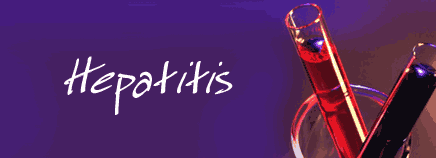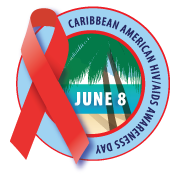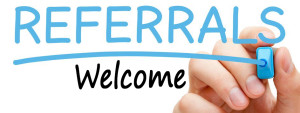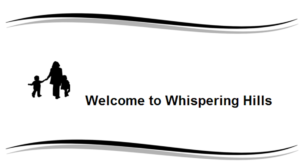
Pregnancy and HIV/AIDS – What You Need to Know
Motherhood is an experience that everyone who wants to, deserves to experience. It is as rewarding as it is life changing, and it is imperative that you are in the best health you can be to start your child’s life the healthiest way possible. What most people don’t realize is that there are ways to get pregnant and not infect your partner or the child. With that said, when embarking on this journey, it is imperative to know that HIV can be spread to your baby during the pregnancy, while in labor, while giving birth, or by breastfeeding. Luckily, you will have many choices to make about lowering the risk of passing HIV to your baby. Just because you have HIV doesn’t mean your child will get HIV. In the United States, before effective treatment was available, about 25 percent of pregnant HIV-positive mothers who didn’t breastfeed and did not receive anti-HIV treatment in pregnancy passed the virus to their babies.
Today, the risk of giving HIV to your newborn is below 2 percent. But you and the baby must get the right HIV drugs at the right times. The steps below can lower the risk of giving HIV to your baby.
- -Get as healthy as possible before becoming pregnant.
- -Start HIV treatment before pregnancy if you need it for your own health. Or, you can start treatment during pregnancy to lower the risk of passing HIV to your baby. If you are already on treatment, do not stop, but do see your doctor right away. Some HIV drugs should not be used while you’re pregnant. For other drugs, you may need a different dosage.
- -Make sure your baby is tested for HIV right after birth. Your doctor or clinic should be experienced in managing babies who have been exposed to HIV. They will tell you what follow-up tests your baby will need, and when.
- -Ask your doctor about starting treatment for your baby right away if your baby is diagnosed with HIV. This may require a number of tests and you may not know until he is 2 to 4 months old.
- -Until you know that your baby is HIV-positive or HIV-negative, ask your pediatric HIV specialist if your baby might benefit from anti-HIV medicines. New research shows that putting a newborn on a 2- or 3-drug anti-HIV medicine plan cuts the infant’s risk of HIV by 50 percent (compared to using one drug only).
- -Ask your doctor about other medicines the baby may need to prevent opportunistic infections until you know for sure whether the baby has HIV.
If you want to get pregnant, or just found out you are pregnant, you need to get to a doctor right away. If you need help finding the resources for you, give us a call and we will be happy to help!

What You Need to Know about Hepatitis
To put it simply, Hepatitis means inflammation of the liver. Unfortunately, nothing about Hepatitis is simple. According to the World Hepatitis Alliance, Hepatitis is a disease that that currently affects more than 500 million people around the world and is responsible for approximately 1.5 million deaths a year. Currently the world’s 8th biggest killer, Viral hepatitis is one of the most underestimated diseases on the planet. Although one in three people around the world have been in contact with a hepatitis virus, many people have no idea what it is.
Viral Hepatitis Transmission
People can be infected with the three most common types of hepatitis in these ways:
- HAV: Ingestion of contaminated fecal matter, even in tiny amounts, from close person-to-person contact with an infected person, sexual contact with an infected person, or contaminated food, drink, or objects.
- HBV: Contact with infectious blood, semen, or other body fluids; sexual contact with an infected person; sharing of contaminated needles, syringes, or other injection drug equipment; and needlesticks or other sharp-instrument injuries. In addition, an infected woman can pass the virus to her newborn.
- HCV: Contact with blood of an infected person, primarily through sharing contaminated needles, syringes, or other injection drug equipment, and, less commonly, blood transfusions, sexual contact with an infected person, birth to an infected mother, and needlesticks or other sharp-instrument injuries.
Chronic HCV is often “silent,” and many people can have the infection for decades without having symptoms or feeling sick. Compared with other age groups, people aged 46 to 64 are 4 to 5 times as likely to be infected with HCV. Any sexual activity with an infected person increases the risk of contracting hepatitis. In particular, unprotected anal sex increases the risk for both HBV and HIV. New data suggest that sexual transmission of HCV among MSM with HIV occurs more commonly than previously believed. (according to the Center for Disease Control)
Viral Hepatitis Prevention
If you have HIV infection, you can lower your risk of contracting hepatitis and other bloodborne viruses by not sharing toothbrushes, razors, or other personal items that may come into contact with an infected person’s blood. Do not get tattoos or body piercings from an unlicensed facility or in an informal setting, which may use dirty needles or other instruments. Just as HIV-positive individuals would not want to engage in behaviors that would put them at risk for hepatitis, these same behaviors would also put others at risk for HIV.
- HAV: The best way to prevent HAV infection is to get vaccinated. The Centers for Disease Control and Prevention (CDC) recommends vaccination for HAV for people who are at risk for HIV infection, including MSM; users of recreational drugs, whether injected or not; and sex partners of infected people.
- HBV: The best way to prevent HBV infection is to get vaccinated. CDC recommends universal vaccination against HBV for people who have or are at risk for HIV infection, including MSM; people who inject drugs; sex partners of infected people; people with multiple sex partners; anyone with a sexually transmitted infection; and health care and public safety workers exposed to blood on the job.
- HCV: There is no vaccine for HCV. CDC estimates that people born during 1945 through 1965 account for nearly 75% of all HCV infections in the United States. The best way to prevent HCV infection is to never inject drugs or to stop injecting drugs if you currently do so by getting into and staying in a drug treatment program. If you continue injecting drugs, always use new, sterile syringes and never reuse or share syringes, needles, water, or other drug preparation equipment. You can also reduce your risk for contracting HCV from sexual contact by
- Abstaining from sexual intercourse.
- Being monogamous.
- Using a condom.
- Avoiding rough sex.
- Getting tested for sexually transmitted diseases and HIV.

…Things You Should Know about HIV and Safer Sex (cont.)
- If you chose to have sex, use a latex condom with EVERY partner. No exceptions.
- Use protection, wear a latex condom.
- Use a new latex condom each time you have vaginal, anal or oral sex.
- Use water based lubricant with latex condoms.
- Never use an oil-based lubricant such as hand lotion or baby oil. It weakens the latex and the condom may break.
- Use a latex barrier (a condom cut in half or a dental dam) if you have oral sex with a women.
- Massage, hugging and masturbation are safe.
- It’s safer not to use drugs.
- Insist on watching your NEW tattoo needle come out of packaging before getting a tattoo. Never share needles or inks for tattooing or piercing.
- NO CONDOM, NO SEX, NO WAY.” tells your partner you’re serious about safer sex.
- Talk about safer sex with EVERY partner before you have sex.
- Ask your partner about his/her sexual history, behaviors and drug usage before you engage in any sexual activity.
- If you are infected and do not inform your sexual partner of your HIV status before sex and you engage in unprotected sex and transmit HIV to that person you have committed a felony.
- Taking a HIV test is the only way to know you are not infected.
- Get tested three to six months after any unprotected exposure.
- You have options. You can buy a home HIV test kit at most drug stores. Then contact the nearest community based organization for counseling or to ask questions. You can also get tested by a doctor, health clinic, community based organization or public testing center.
- Some testing sites keep results confidential while others utilize anonymous testing. Confidential testing uses your real name. You and your doctor will know the results. Anonymous testing doesn’t use your name at all. Only you will know your results.
- People are still dying of AIDS related illnesses.
- THERE IS NO CURE! Remember you are in charge.

Caribbean American HIV/AIDS Awareness Day, 6/8/13
Because June 8, 2013 is Caribbean American HIV/AIDS Awareness Day, it is important to recognize the startling facts about the demoralizing impact HIV/AIDS is having on the Caribbean American communities all over the world. According to the Caribbean People International Collective, Inc., surveys of Caribbean American communities reveal significant health disparities and have identified HIV/AIDS and inadequate access to health care as a major health issue in this population.
People of color now account for a greater proportion of AIDS cases reported. A close examination of the U.S. AIDS cases over the past decade reveals that HIV/AIDS is the leading cause of death among African American between the ages of 25-44, according to the Centers for Disease Control. It is important to note that African-American are often viewed as one group, there is, in fact, a wide variety of populations in the US included under this heading are upper class, lower class, Christian, Muslim, inner city, suburban, descendants of slaves and recent Caribbean immigrants all come under the African-American heading.
A high rate of migration between the Caribbean and the United States creates potential public health implications for the delivery of care and treatment services for Caribbeans living with HIV/AIDS in the United States. Poor health, premature death and AIDS have challenged the extended Caribbean-American family in every part of the country to find new reservoirs of compassion, to increase our political voices, confront many difficult issues such as drug use, sexuality, poor health care which for generations, have been deemed unmentionable. The spiritual lives of our communities have been tested to its core as religious leaders reach out to advocate with families who have suffered stigma and exclusion.
World AIDS Day 2012 – Getting to Zero
World AIDS Day is celebrated on December 1st around the world. Since December 1, 1988, World AIDS Day is a day to honor the millions who have died of AIDS but also for the future generations. This day is also an opportunity for people to worldwide to unite in the fight against HIV/AIDS, raise awareness and celebrate the victories such as: increased access to care and prevention services.
The theme for this year and through 2015 is Getting to Zero. The theme is about Getting to Zero New HIV Infections, Zero Discrimination, and Zero AIDS Related Deaths. According to UNAIDS estimates, there are 34 million people living with HIV around the world. In 2010, 2.7 million people became newly infected with the virus including 390,000 children. Despite a decline in the estimated AIDS-related deaths, there were still an estimated 1.8 million AIDS-related deaths in 2010.
World AIDS Day is important for reminding people that HIV has not gone away. There are still many things to be done. On December 1 and every day, DO SOMETHING! Get inspired, Get educated and most importantly, Get tested!
National Latino AIDS Awareness Day 2012 Photo Contest
Women On Maintaining Education and Nutrition invites photographers (amateurs and novice alike) to enter our National Latino AIDS Awareness Day 2012 Photo Contest! “Hispanics United to End AIDS. Get Tested for HIV“ is the theme for the 2012 commemoration! W.O.M.E.N. wants your best photographs for this event pertaining to:
- Unity
- What HIV/AIDS means to you
- Hispanic Heritage
Online entries can be uploaded starting 12:01 am Eastern Standard Time on October 1, 2012. Deadline for submitting entries is 11:59 pm Pacific Standard Time on October 15, 2012.
Entries will be judged and winners decided October 16, 2012! Prizes include gift cards and winning photographs displayed on our website and social media pages!
Please Submit digital photographs electronically to :
For more details, click here!
Catherine Wyatt-Morley Honored By SELF Magazine
Every year SELF Magazine honors Women Doing Good; honorees are real women doing real things to make a difference despite personal adversity. The women honored have used action to heal and shift their energy into creating something positive and uplifting to benefit others.
Catherine Wyatt-Morley, Founder and CEO of Women On Maintaining Education and Nutrition, is among those being honored by SELF for her tireless efforts in the fight against HIV/AIDS.
“My wish is for every woman to be educated about this issue. Married women think they’re immune to the virus. But no one is an exception with AIDS. I want to reach that woman over 50 who thinks she can have unprotected sex or the young girl who is just starting to date”, says Wyatt-Morley.
Catherine Wyatt-Morley, Founder and CEO of Women On Maintaining Education and Nutrition is among those being honored by SELF Magazine for her tireless efforts in the fight against HIV/AIDS.
Because of this wish, Wyatt-Morley has spent the last 18 years battling HIV/AIDS for not only herself; but for future generations, in hopes that her struggles will prevent others from becoming infected with HIV.
Click here to read the full article.
National HIV Awareness Month
As we commemorate the second anniversary of the release of the United States’ first-ever National HIV/AIDS Strategy and the return of the International AIDS Conference to the U.S. after 20 years, July is also National HIV Awareness Month! This is the opportunity to re-ignite Americans through awareness and action to change the landscape of the HIV epidemic in the U.S.
The goals of the National HIV Awareness Month are: to create a wide scale public awareness of HIV/AIDS, end HIV stigma and discrimination and engage new stakeholders in the fight against HIV/AIDS with the ultimate goal of ending the epidemic. Throughout the years, many Americans have began to view HIV/AIDS as a global problem with no impact here in the U.S. However, 56,000 Americans are infected with HIV every year.
National HIV Awareness Month is a call to action for Americans to work towards the goals of the National HIV/AIDS Strategy and ultimately an AIDS-free generation.
For more information on National HIV Awareness Month, visit http://www.nationalhivawarenessmonth.org.
National HIV Testing Day 2012
Wednesday, June 27 is National HIV Testing Day, entities across the U.S. will be offering free and confidential HIV testing as well as prevention,education,counseling services. On this day, everyone is encouraged to Take the Test, Take Control.
Currently, there are more than 1.2 million people living with HIV in the U.S. and an estimated one in five are infected and do not know it. Getting tested and knowing your status is a critical first step to saving a life and getting treatment. HIV testing and treatment saves lives and helps reduce the spread of HIV.
On this day, National HIV Testing Day, decide to take control and responsibility of your health, Get Tested!
Launched in 1995, National HIV Testing Day was developed in response to the growing number of HIV infections in communities of color and other heavily impacted communities. National HIV Testing Day was organized by the National Association of People With AIDS (NAPWA) and partners with the Centers for Disease Control and Prevention (CDC), AIDS.gov and other entities across the country.
To find a testing site near you or for more information on NAPWA and National HIV Testing Day, visit http://hivtest.cdc.gov.







